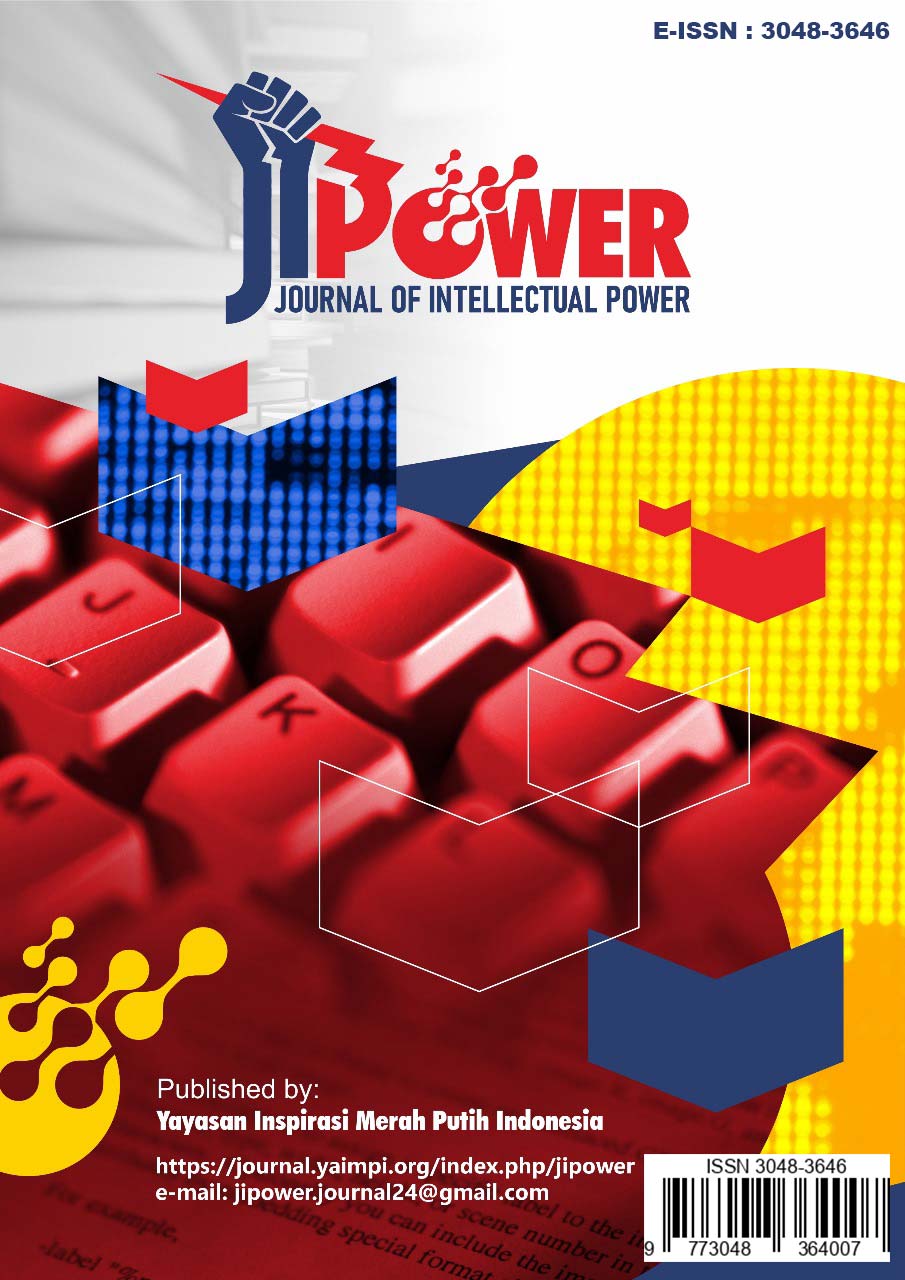Implementation of Safety Management System in Improving Ship Crew Work Safety
DOI:
https://doi.org/10.63786/jipower.v2i1.31Keywords:
Safety Management System, Occupational Safety, Ship CrewAbstract
The importance of occupational safety in the maritime industry encourages the implementation of the Safety Management System (SMS) to reduce the risk of accidents and improve protection for ship crews. This study aims to analyze the role of SMS in improving work safety, identifying implementation challenges, and its impact on incident reduction. The research method uses a qualitative approach with literature analysis and case studies to explore the complexity of SMS implementation in the maritime sector. The results show that effective SMS consists of four main components: safety policy, risk management, safety assurance, and safety promotion. Its implementation involves risk assessment, ongoing training, and periodic evaluation. However, challenges such as a lack of management commitment, an unsupportive organizational culture, and limited resources often hinder the success of SMS. Nonetheless, companies that successfully implement SMS experience increased safety awareness, reduced incidents, and the formation of a strong safety culture among crews. In conclusion, SMS is a crucial tool to improve work safety in the maritime sector. Its success depends on management commitment, crew training, and technology integration. Research recommendations include longitudinal studies to assess the long-term impact of SMS as well as quantitative approaches to objectively measure its effectiveness. These findings make a practical contribution for shipping companies and regulators in optimizing safety policies.
Downloads
References
Adhitanoko, I., & Widodo, S. (2024). PENERAPAN DAN TANTANGAN SAFETY MANAGEMENT SYSTEM (SMS) PADA ORGANISASI PENERBANGAN MILITER. HUMANIS (Humanities, Management and Science Proceedings, 4(2), 780–789.
Agustini, Grashinta, A., Putra, S., Sukarman, Guampe, F. A., Akbar, J. S., Lubis, M. A., Maryati, I., Ririnsahawaitun, Mesra, R., Sari, M. N., Tuerah, P. R., & Rahmadhani, M. V. (2023). Metode Penelitian Kualitatif (Teori & Panduan Praktis Analisis Data Kualitatif) (Irmayanti (ed.)). Tanjung Morawa : Mifandi Mandiri Digital.
Ali, A., & Khan, M. (2023). Risk-Based Safety Management System in Maritime Operations: A Case Study. Maritime Policy & Management, 50(1), 45–60.
Ardianto, M. S. (2017). PENGARUH FAKTOR KESELAMATAN KERJA PADA CREW DI ATAS KAPAL MV. DK 01. Politeknik Ilmu Pelayaran Semarang.
Bakamla. (2025). Pentingnya Keselamatan Pelayaran dalam Industri Maritim Indonesia. Bakamlatanjungpinang.Com. https://bakamlatanjungpinang.com/2025/03/pentingnya-keselamatan-pelayaran-dalam-industri-maritim-indonesia/
Hossain, M., & Rahman, M. (2021). The Role of Technology in Enhancing Safety Management Systems in Maritime Operations. Journal of Marine Science and Engineering, 9(5), 567–580.
Khomeiny, A. S. El, Primanta, F., & Nasution, S. (2019). Peran Safety Management System Dalam Keselamatan Pelayaran. Jurnal Manajemen Bisnis Transportasi Dan Logistik (JMBTL), 5(3), 375–380. http://library.itl.ac.id/jurnal
Manawis, R. (2024). What is a Safety Management System? Safety Culture. https://safetyculture.com/topics/safety-management-system/
Mappangara, A. S. C. (2024). Sistem Layanan Trasportasi Laut (Marwati (ed.); 1st ed.). Makassar : Professorline. https://book.professorline.com/index.php/about/article/view/54/52
Nainggolan, H., & Hendra, H. (2023). Evaluasi Penerapan Sistem Manajemen Keselamatan Dan Kesehatan Kerja (K3) Pada Industri Galangan Kapal Kecil Di Indonesia. Jurnal Kesehatan Tambusai, 4(4), 7129–7151. https://doi.org/10.31004/jkt.v4i4.16083
Purwanto, Y. H., & Facta, M. (2016). Implementasi Contactor Safety Management System (CSMS) pada Proses Pengadaan Barang Jasa di PT PLN (Persero). Jurnal Transistor Elektro Dan Informatika (TRANSISTOR EI), 1(1), 28–34.
Putri, A. C. (2024). Metode Penelitian Kualitatif: Pengertian, Jenis, Kelebihan dan Kekurangannya. Telkom University. https://telkomuniversity.ac.id/metode-penelitian-kualitatif-pengertian-jenis-kelebihan-dan-kekurangannya/
Sari, R., Prabowo, H., & Setiawan, A. (2023). Organizational Culture and Its Impact on The Effectiveness of Safety Management System in Shipping Companies. International Journal of Maritime Engineering, 165(3), 215–230.
Sitorus, L. (2023). Pengertian, Komponen dan Contoh Safety Management System. Kompasiana Beyond Blogging. https://www.kompasiana.com/lionysitorus5577/63d0b9664addee6a29609783/pengertian-komponen-dan-contoh-safety-management-system
Sugiyono. (2022). Metode Penelitian Kualitatif Untuk Penelitian Yang Bersifat: Eksploiratif, Enterpretif Dan Konstruktif (Suryandari (ed.)). Bandung : Penerbit Alfabeta.
Turner, K. (2018). Safety Management Systems. Safety and Quality in Medical Transport Systems: Creating an Effective Culture, 113–126. https://doi.org/10.1201/9781315607450-11
Zhang, Y., Liu, X., & Wang, J. (2022). The Impact of Safety Management System on Maritime Safety Performance: Evidence From the Shipping Industry. Journal of Safety Research, 82, 123–134.
Downloads
Published
How to Cite
Issue
Section
License
Copyright (c) 2025 Ofel Yericho Todingan, K.P. Suharyono S. Hadiningrat, Verry Albert Jekson Mardame Silalahi

This work is licensed under a Creative Commons Attribution-ShareAlike 4.0 International License.














